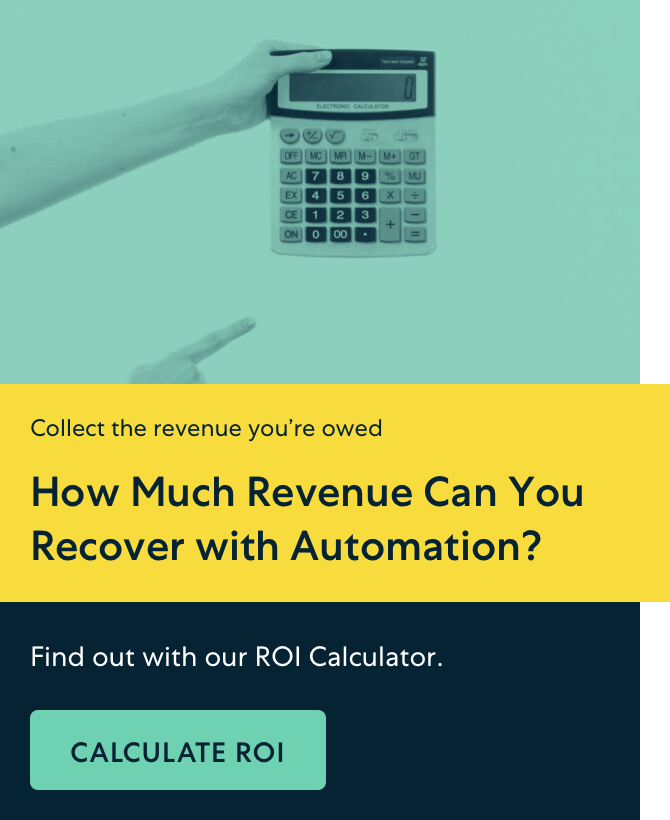ASC 606 was first announced over a decade ago. So, why is the SaaS world still talking about it?
It’s true that this update marked perhaps the biggest change in accounting standards in about a century. Any kind of change for companies is hard, especially one that affects virtually every aspect of how a business runs.
In this blog, we are going to dive into the changes brought about by ASC 606 and what it means for SaaS companies and other businesses who need to recognize recurring revenue–and how automation is the key to a hassle-free transition
TL;DR
- ASC 606 is a revenue recognition standard introduced in 2014. It requires revenue to be recognized when performance obligations are met, not when payment is received.
- SaaS companies must adapt to gradual revenue recognition over time, which affects financial statements.
- Automation tools can streamline revenue recognition tasks and ensure compliance, as well as provide enhanced financial reporting.
Understanding ASC 606
The generally accepted accounting principles (GAAP) accounting standards codification (ASC) topic 606—or simply ASC 606 for short—was announced in 2014 as joint guidance from the Financial Accounting Standards Board (FASB) and the International Accounting Standards Board (IASB).
“The [FASB] has redefined everything from revenue allocation to cost deferral,” explains Curtis Thompson, a director at Bridgepoint Consulting. “That means everyone in finance, accounting, sales, delivery, product management, and marketing has to change the way they think about revenue recognition—and how they work as a result.”
The purpose of this new standard is to replace previous revenue recognition standards that created inconsistencies between industries and different types of transactions. ASC 606 provides a more streamlined revenue recognition model for when and how all types of businesses need to account for revenue earned. This means less variability between different industries, making it easier to understand financial performance.
Key principles of revenue recognition under ASC 606
The core principle in the ASC 606 guidelines – and the biggest change from previous standards – is that revenue must be recognized only when performance obligations in the contract are met—not when the payment is received. This decision was to prevent businesses from reporting revenue within a reporting period they hadn’t earned yet.
Under ASC 606, revenue should be recognized when a transaction or arrangement meets the following criteria:
- Clear evidence of a financial arrangement
- Completion of product or service delivery
- The price to the buyer is fixed or measurable
- Funds are reasonably collectible
Given the ongoing nature of SaaS and many other subscription-based businesses that don’t sell physical goods, complying with this standard proves to be an ongoing challenge. Unlike sales of physical goods, where all four of these principles are generally recognized at the same time, subscription offerings are a lot more complex. The financial arrangement is usually agreed upon far in advance of service delivery being completed, which makes revenue recognition a lot more nuanced and complex.
The Five-Step Model
Fortunately, ASC 66 has also introduced a 5-step framework to guide businesses on disclosure requirements and when is the appropriate time to recognize revenue:
Step 1. Identify the contract(s) with a customer
Under ASC 606, a customer contract is defined as any agreement between two or more parties that creates enforceable rights and obligations. This may be written, verbal, or implied, depending on the nature of the contract. To recognize the revenue earned from a contract, it needs to cover the following:
- All parties are committed to fulfilling their performance obligations as outlined in the agreement i.e. promised goods and payment.
- Each party’s rights concerning the transfer of control over a product or service.
- Clear commercial substance.
- Identifiable payment terms.
- High likelihood of collectability of the transaction price.
Step 2. Identify the performance obligations in the contract
Next, the business must identify the separate performance obligations that make up the contract. Most predominantly, this means the business’s promise to transfer a particular good or service to the customer according to the terms agreed upon in the contract. A good or service is considered a distinct performance obligation if:
- The customer benefits from distinct goods or services in their own right.
- The transfer of certain goods or services to the customer is happening separately from other performance obligations in the contract that are still due to be fulfilled e.g. professional services.
Step 3. Determine the transaction price
The transaction price is the amount of consideration that a business expects to earn in exchange for transferring promised goods or services to the customer over a particular timeframe. This must exclude any amounts that go to third parties, such as taxes. The amount of consideration will also be influenced by variable considerations such as incentives like discounts, rebates, and upgrades, as well as contract modifications and price concessions.
The total value of variable considerations can be determined by either the expected value (the business’s probability-weighted estimate) or the most likely amount (the highest likely amount of occurrence).
Step 4. Allocate the transaction price to the performance obligations in the contract
When there are multiple performance obligations present in an agreement, the transaction price must be allocated to each performance obligation based on its standalone selling price. This is most relevant to subscription businesses who receive recurring revenue and will realize performance obligations over an extended period of time, and thus are required to recognize revenue as those obligations are fulfilled, not before.
Step 5. Recognize revenue when (or as) the entity satisfies a performance obligation
When each single performance obligation is satisfied, the business will recognize the revenue earned according to the five-step model i.e. when control over a particular good or service is transferred to the customer and becomes classified as receivable. In a subscription context, the timing of this recognition is usually determined by when the subscription starts and ‘control’ of the service is officially in the hands of the customer.
Implementation of ASC 606 for SaaS Companies
Preparing for the transition to ASC 606
Your business must understand its responsibilities and obligations under the new revenue standard, and assess the impact it will have on your current revenue recognition practices and financial reporting. It’s important to collaborate with teams across your organization that will be affected by this change, including finance, IT, sales, and legal to develop a solid transition plan.
Practical steps for implementation
To implement ASC 606, you need to run through the five-step model as outlined above with all of your existing contracts. This includes identifying all separate performance obligations, contract modifications, and allocating a transaction price to each obligation. Then, you need to set the appropriate time to recognize that revenue on your financial statement. If this requires your business to make any significant changes to your revenue recognition processes, it’s important to maintain documentation of these policy adjustments as they relate to ASC 606.
Impact on financial statements and reporting
Incorrectly recognizing revenue is a massive liability for your business. If revenue is not being reported properly, you run the risk of:
Inaccurate financial statements. Deferred revenue is a critical component of your financial statements under ASC 606. If the deferred revenue is not properly tracked, this leads to inaccuracies in financial statements, which can undermine credibility and affect your ability to secure funding or attract investors.
Misleading financial metrics. Properly tracking deferred revenue is essential for calculating metrics such as revenue growth and profitability. If deferred revenue is not being accurately tracked, this makes it difficult for your company to make informed business decisions.
Cash flow problems. If a business doesn’t properly track deferred revenue, it can result in the company not having enough cash on hand to cover its expenses, pay its employees, or invest in growth opportunities.
Non-compliance. Failure to properly track deferred revenue can also lead to noncompliance with accounting standards and regulations, which can result in legal and financial consequences.
Use of technology and software to aid compliance
Complying with the ASC 606 revenue recognition standard puts a significant burden on businesses. However, there are major consequences to ASC 606 non-compliance.
But with the right fintech tools, accurate, and hassle-free revenue recognition is a breeze. You can automate tasks that would take days to do manually and be highly prone to error. With ASC 606-compliant recurring billing software like Stax Bill, you can automate:
- Recurring billing and invoicing
- Receipt of payments
- Recognition according to any revenue recognition method—immediate, fixed interval, or milestone.
When using Stax Bill, complex tasks like recognizing revenue become something you can simply set and forget—and redirect your efforts to more tactical, growth-promoting projects.
Benefits of revenue recognition automation
Complying with ASC 606 can feel overwhelming for subscription businesses, given the number of changes this means to accounting and revenue recognition. Here’s how your subscription business can benefit from automating your revenue recognition process: .
1. Increased accuracy and consistency in revenue recognition.
Automating the revenue recognition process records all transactions accurately and consistently, reducing the risk of human error and ensuring your financial statements reflect the true state of your business.
Automation turns the daunting project of recognizing revenue into a task you can set and forget. Simply tell your automation system how you’d like the revenue for a certain product to be recognized, and it’ll do the rest.
2. Improved compliance with ASC 606 regulations.
ASC 606 non-compliance penalties can be hefty, ranging from fines to even jail time, depending on the severity of the error.
But automation allows you to recognize revenue in a way that removes the possibility of human error. . Automation eliminates the need for manual data entry and reduces the risk of data entry errors, freeing up time and resources for other important tasks and improving overall efficiency. Moreover, automated revenue recognition solutions are designed to ensure full compliance with the ASC 606 regulations, greatly reducing the risk of non-compliance and potential fines or legal action.
3. Improved financial reporting and analysis
Automated revenue recognition solutions keep track of your liabilities without needing you to lift a finger. You’ll have access to real-time data and insights, enabling your business to make informed decisions and improve overall financial reporting and analysis. This leads to more accurate forecasting and better decision-making in the future.
ASC 606-compliant SaaS billing software: Your new revenue recognition superpower
Whether your priority is to improve compliance, accuracy, reporting ability, or reduce the amount of time your accountants spend on revenue recognition, throwing automation by ASC-606 compliant software into the mix is a game-changer.
When you have software like Stax that can automate the process, you’ll run through the first three steps of the ASC 606 framework as usual:
- Identify your contract with a customer.
- Identify the performance obligations in the contract.
- Determine the transaction price.
Step four—allocating the transaction price—needs to be done only once for each product or service in your catalog. Decide at which point a performance obligation will be fulfilled, and note it in your system.
Step five takes into account what you set up in step four and automatically applies each time you create a new contract with a customer––as easy as that.
ASC-606 may feel like a scary accounting standards update. But with the right knowledge and technology on your side, your business can feel confident that you are taking all the right steps to recognize revenue accurately and balance the books. For subscription businesses that require robust management of recurring billing and revenue recognition, Stax Bill provides a powerful all-in-one solution for an accessible monthly fee. Check us out today.
FAQs about ASC 606
Q: What is the ASC 606?
ASC 606 is a comprehensive revenue recognition standard that outlines how and when companies should recognize revenue. This standard was introduced by the Financial Accounting Standards Board (FASB) to provide a uniform framework for recognizing revenue across industries, enhancing comparability and clarity in financial reporting.
Q: What are the core principles of ASC 606?
The core principles of ASC 606 focus on the nature, amount, timing, and uncertainty of revenue and cash flows arising from contracts with customers. They are based on a five-step model designed to achieve this principle:
- Identify the contract(s) with a customer.
- Identify the performance obligations in the contract.
- Determine the transaction price.
- Allocate the transaction price to the performance obligations in the contract.
- Recognize revenue when (or as) the entity satisfies a performance obligation.
Q: Is ASC 606 part of US GAAP?
Yes, ASC 606 is part of the US Generally Accepted Accounting Principles (US GAAP). It is a significant update that replaces previous revenue recognition guidance, standardizing how companies across all industries recognize revenue in financial statements.
Q: What does ASC 606 not apply to?
ASC 606 does not apply to lease contracts, insurance contracts, financial instruments, and guarantees (other than product or service warranties), which are covered by other specific standards. It focuses specifically on revenue from contracts with customers.
Q: Why is ASC 606 important?
ASC 606 is important because it provides a single, comprehensive revenue recognition model for all companies in all industries. It helps investors and other stakeholders better understand a company’s revenue, obligations, and financial performance.
Q: Does ASC 606 apply to nonprofits?
Yes, ASC 606 also applies to nonprofits. While primarily designed for businesses, the principles of ASC 606 regarding revenue recognition from contracts with customers are applicable to nonprofit entities as well, affecting how they recognize revenue from grants, contributions, and other contracts.





